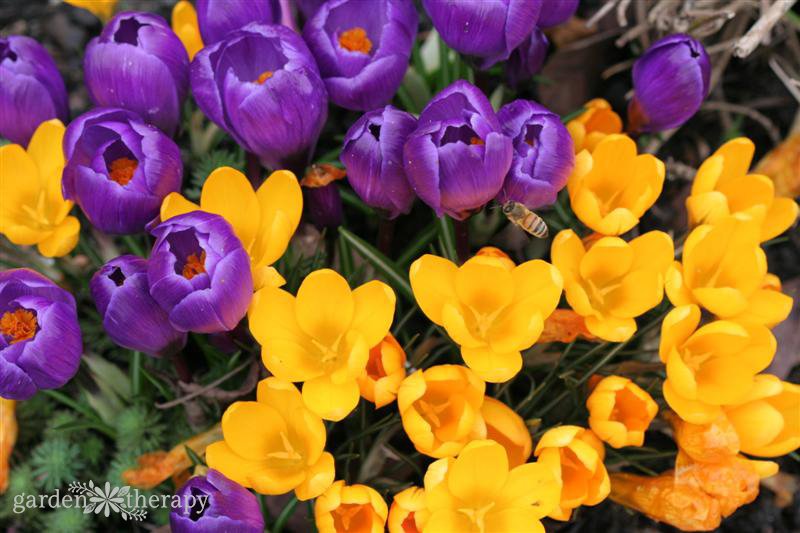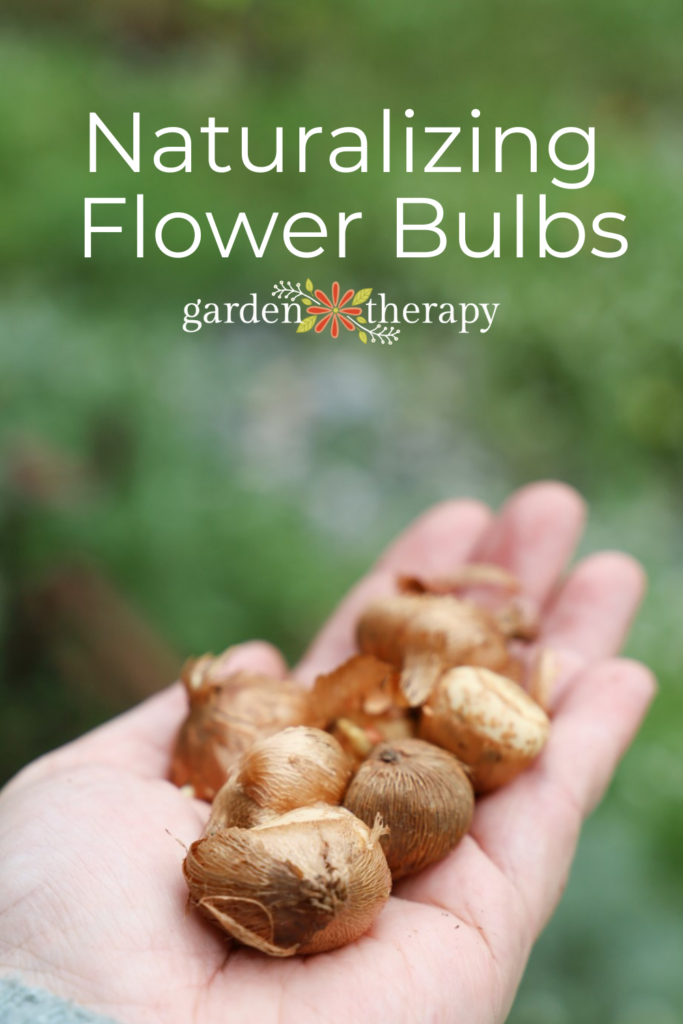A year ago, I planted 1500 bulbs in my front lawn in an attempt to create an epic spring showcase. But how did it turn out? I’m sharing the dirt on the successes, challenges, and all the things I learned in my first year of naturalizing bulbs in my lawn.
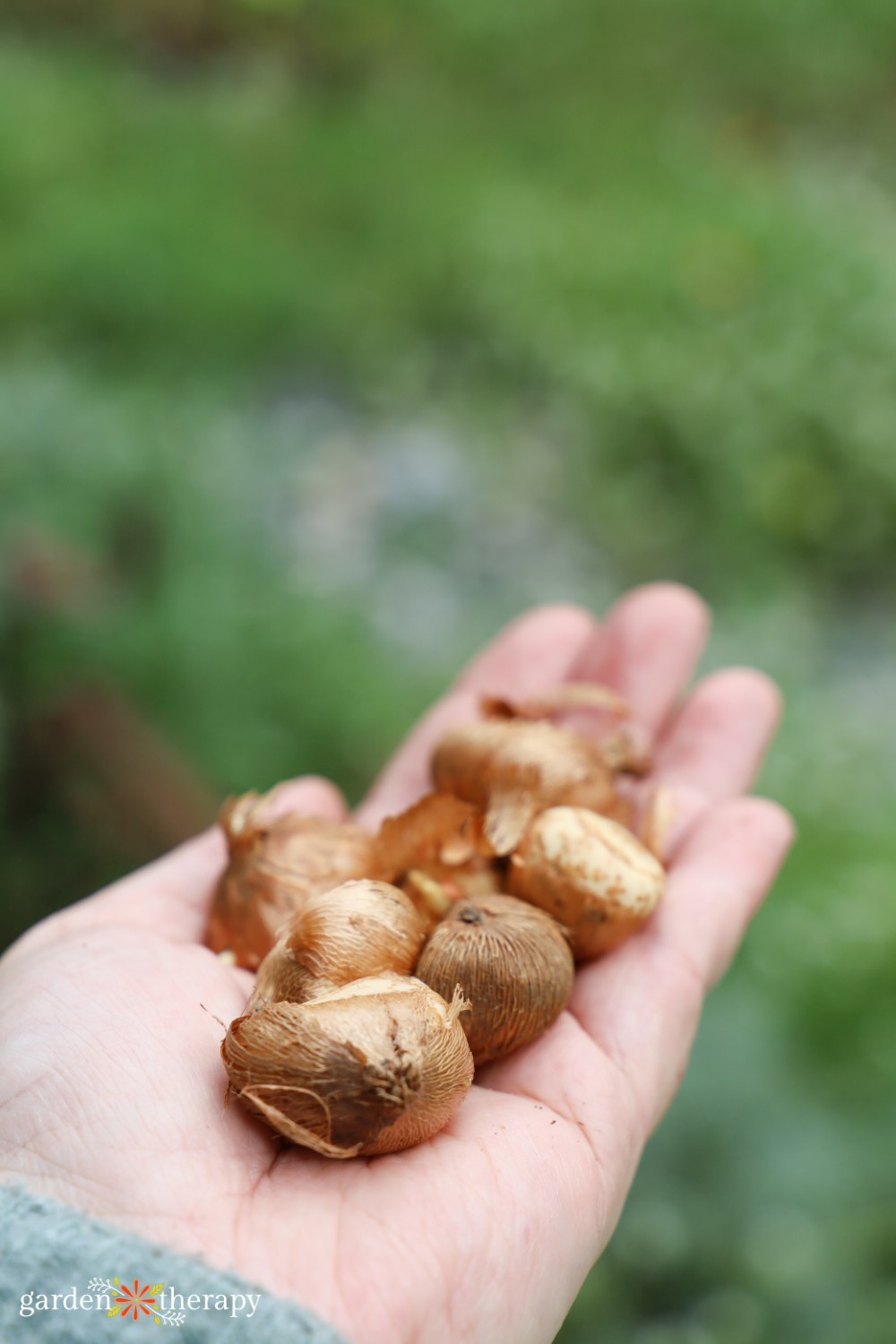
Last fall, I planted over 1500 bulbs in my front yard. Yes, 1500!
Catch up on that project here: planting of the bulb lawn.
Since fall bulb planting has delayed gratification, I had to wait a whole season to see if my hard work would pay off.
I’m happy to say that I had one of the most beautiful springs thanks to all of the flowers.
Oh,didn’t I mention? Instead of grass, I planted wildflower seeds over the bulbs.
DOUBLE FLOWER LAWN!
Let’s dive into what you need to know about naturalizing bulbs in a lawn, and how my first year flower lawn turned out.
Sponsored Content: I’m so happy to be working with flowerbulb.eu once again after they sponsored the first planting of my bulb lawn last year. They don’t sell flower bulbs, their goal is to spread information of bulbs. They’re truly an amazing resource to learn about spring and summer flowering bulbs, with plenty of tips on how to plant them.
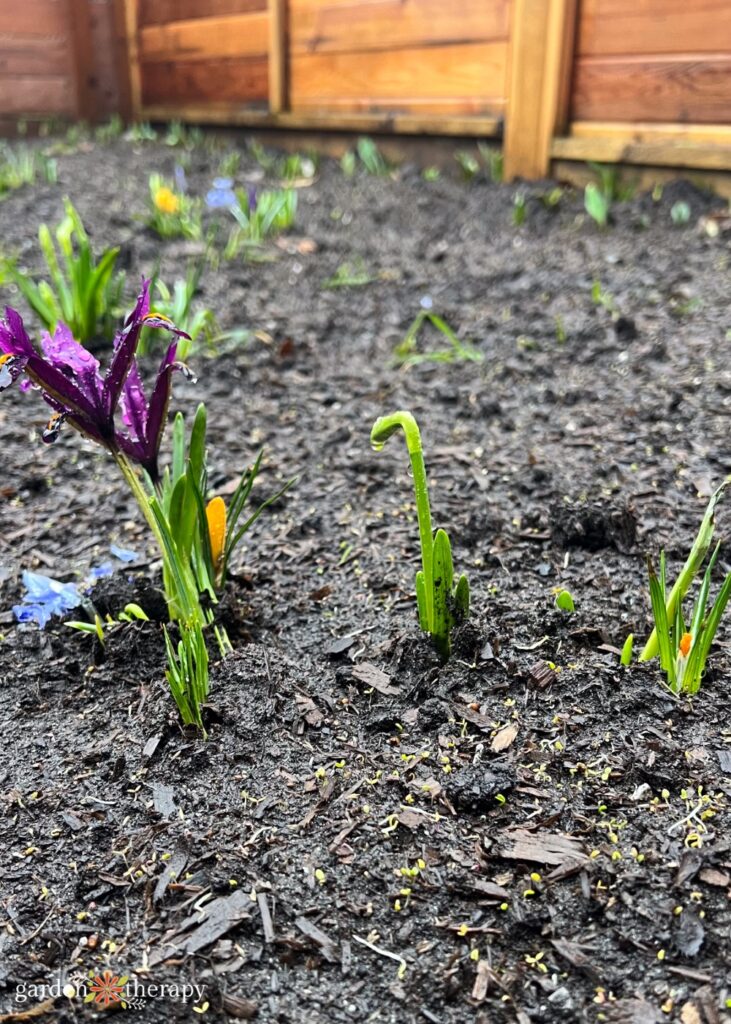

My Bulb Lawn Design
My front lawn was a mix of patchy grass, weeds, and moss. The grasses were struggling, so to keep some green and avoid a winter of mud, I dug out little shapes and islands throughout the lawn. I didn’t weed, top the soil up, and grade the lawn at this stage, I just added the bulbs.
I made my own mix of ten different bulbs, including narcissus, anemone, dwarf iris, snowdrops, muscari crocus, tulips, and Lucile’s glory-of-the-snow. In true chaos gardening style, I added handfuls to the planting holes, turned them right side up, and placed the lawn chunks back over them.
I have an entire post about how I planted and designed my bulb lawn, including the complete bulb mix I used. Read all about that part of the process here.
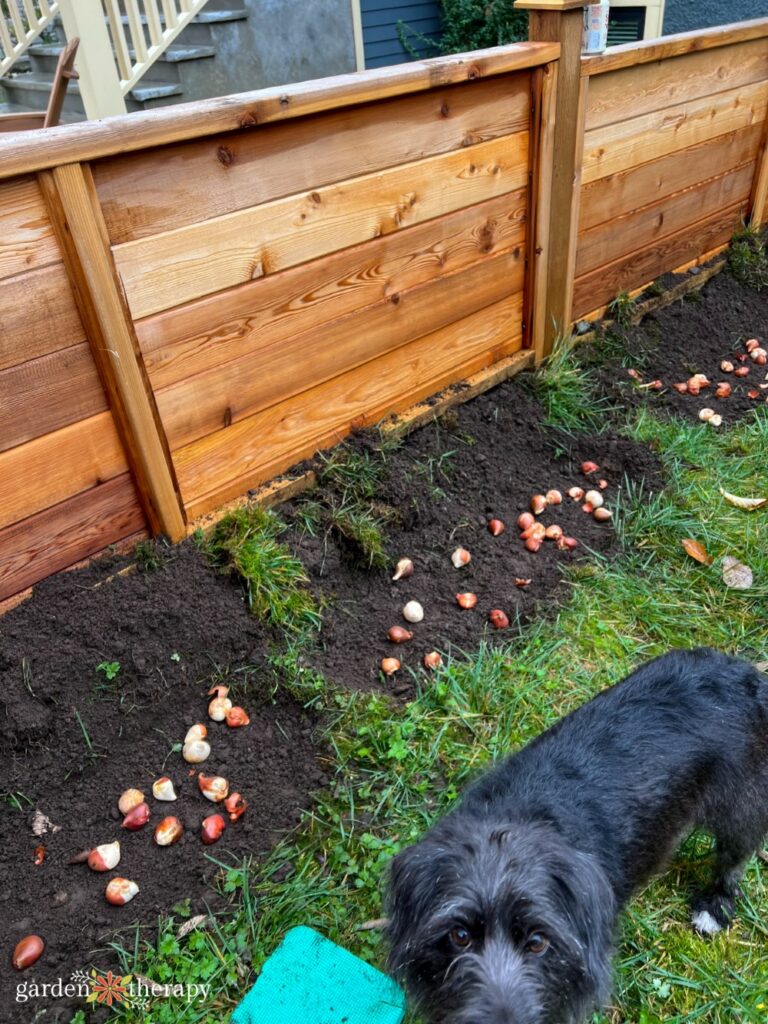

A Warm Winter
In February, it was so warm with El Niño that we started to see some early signs of spring. I thought, why not follow Mother Nature’s lead?
Once again I skipped the weeding and removing the grass. Instead, I opted for a chaos gardening approach. I loaded in tons of topsoil and put it over the existing lawn and graded the lawn. Once I raked it all out, I spread the wildflower seeds on top. Just in time, as the bulbs began to come up.
In no time you could see all the bulbs beginning to come up and the little seeds germinating.
The successes were certainly the narcissus and grape hyacinth. They grey in plentiful clusters and looked striking together. At that same time the anemones were blooming but they grew quite short. Since they are a similar colour to the grape hyacinth they got a bit lost. Such a shame, they are one of my favourite flowers.
I was surprised how few snowdrops, crocus, and iris came up. These are so often the bulbs that thrive in mass plantings. Perhaps I planted the bulbs too deeply or perhaps the poor showing was due to the big deep freeze we had. Probably, they simply need a few more years to naturalize and really give me the wow factor I’m looking for.
The Bulb Lawn in the Summer
After the bulbs had their spring welcome party, they went dormant for the summer. Since I don’t mow my lawn, it allowed the bulbs to recharge (my wildflower lawn doesn’t need mowing either).
I started the wildflowers from seed, so there was a constant flush of flowers on my lawn well after the bulbs were gone. The bulbs really steal the show in the spring, and give my seedlings a chance to germinate and grow. A perfect pairing!
From spring to summer, I had people stopping to admire my lawn and all its beautiful flowers.
Filling in the Gaps
What are the jobs to do one year later? Not much! I’m adding 200 assorted crocus bulbs to add a bit more colour to the early spring.
While 200 isn’t very many, it’s a boost to the spaces that were looking a bit bare. My lawn also isn’t super large, so it will be enough to make a difference.
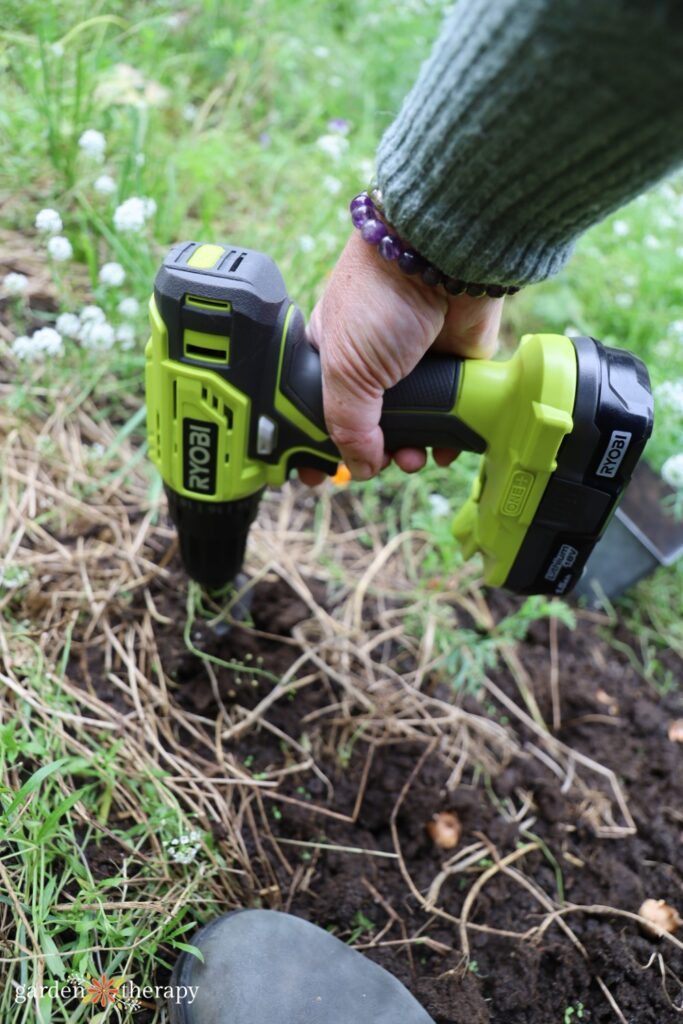

To plant the crocus bulbs, I used a Power Planter auger attachment for my drill to loosen up the soil and make planting holes. It even would up a few buttercup vines at the same time! I moved the wildflowers aside gently and planted where there was some bare space. I planted the crocuses in groups of 8-10, pointy side up and about 4” deep. Next year there will be a wave of flowers that will fill out more each year.


What I Learned Growing a Bulb Lawn
Sometimes, it was rainbows and sunshine, and sometimes, it was shade and mud. Here are my biggest takeaways from my first year.
The Challenges of the First Year
Since it was the first year, it did look a little sparse. While 1500 bulbs may sound like a lot, it does take a few years for the bulbs to naturalize and multiply to really fill in the lawn.
Because this was the first year of my wildflower lawn, I also had that period where I just had bare soil with seedlings coming through. It didn’t look that great while I waited for things to sprout and bloom.
On the other hand, with 1500 bulbs planted, so many flowers sprung up that visitors didn’t notice my muddy mess beneath. Takeaway: people only notice the blooms. While I, the gardener, noticed the bare spots and mud, the folks who walk by just see the flowers, smile, and tell me how much they enjoy my yard. Love!
This is the most beautiful result of my bulb lawn: the joy it has brought to my neighbourhood. Every time I went outside, people would stop me to talk about the flowers. Those who have lived in this neighbourhood for years talked about how they watched the previous owners struggle with the turf grass and that they appreciated my new direction.
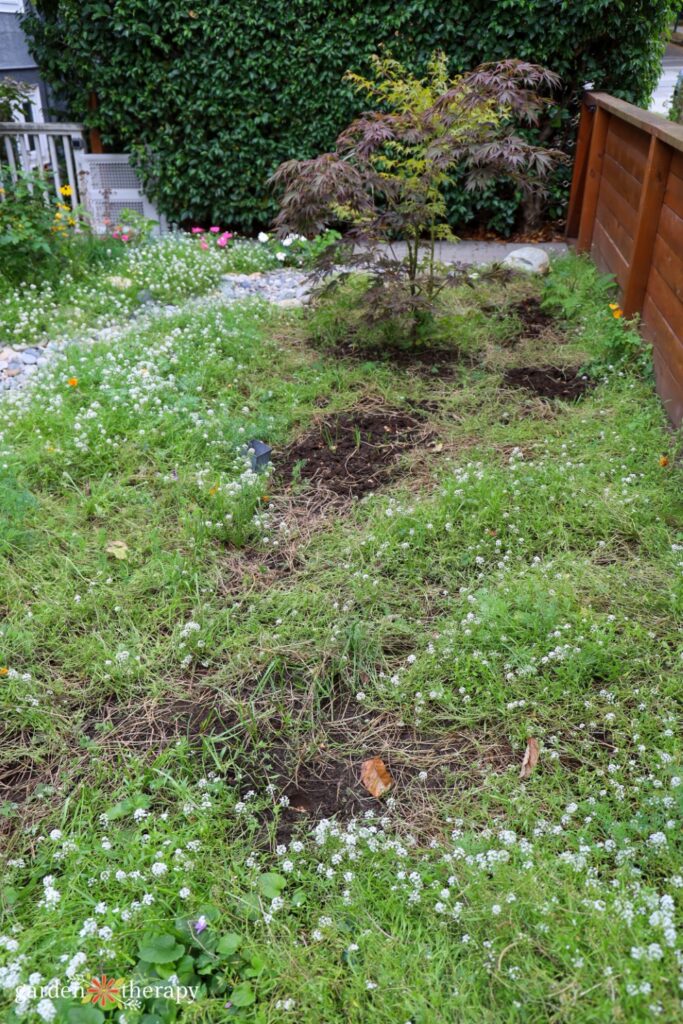

Cutting Flowers
Last fall I didn’t even think I was also planting a lawn full of cut flowers! As the bulbs grew in and bloomed, I has so many tulips, narcissus, and muscari that I began to cut some and bring them inside rather than purchase a bouquet at the grocery store.
While most are short stems, a bulb lawn can still be a creative way to have a cut flower garden with little fuss. They won’t take up room in the flower bed, and you can choose to cut them or leave them as you wish. Tulips and daffodils are some of the best cut flowers for spring.
Planting Design
The effort of planting that many bulbs is also a consideration. I was experiencing a flare-up of so I didn’t quite have the mobility to individually plant each bulb. It was a faster solution to mix the bulbs and plant those randomly in the sections of lawn we cut out.
Even with the help of two other people, it took me three hours to plant these bulbs, even in this accelerated way.
If I had done the work of planning an intricate pattern throughout the garden, it would probably have looked more “designed”. But in reality, it would have taken me about five times as long. Chaos bulb planting for the win!
My design all along was to plant a meadow of spring bulbs spotted with wildflowers, and I’m eager to see it come together next spring.
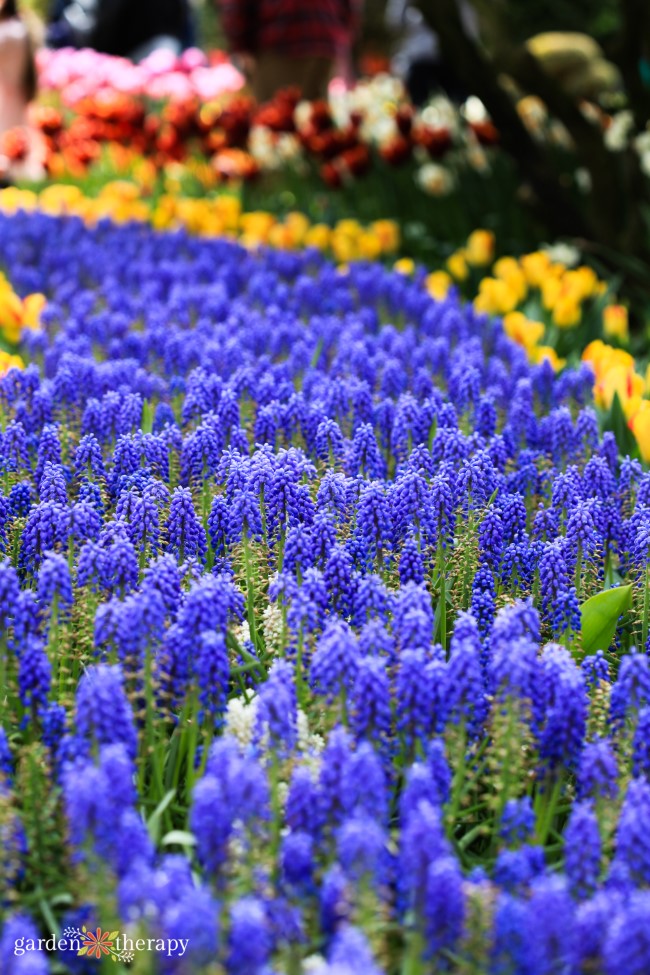

My DIY Bulb Mixture
For my bulb lawn, I mixed ten different kinds of bulbs together. I loved how easy it was for planting and that you got such a mixed, dotted lawn.
That said, if I were to do this again, I wouldn’t mix 10 types of bulbs, I would only choose 4-6 varieties, max. Same amount of effort, but there is more impact with many of the same flower rather than a smattering of 10 different types.
Even better, I would purchase a mixture of bulbs designed specifically for naturalizing bulbs in lawns. I made my own mixture, but bulb sellers do a great job of curating mixes for succession blooming and naturalizing.
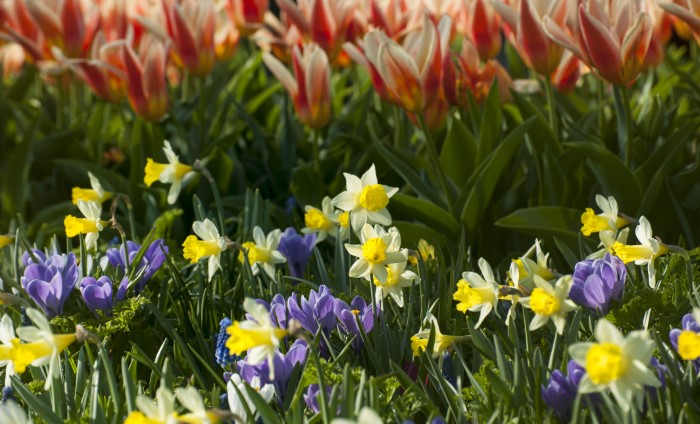

Low Maintenance for the Win
My bulb lawn was incredibly low maintenance. After the work of planting the bulbs, I pretty much did nothing else! It didn’t require any supplemental water, which is amazing.
I only watered my entire lawn once this summer, so the wildflowers did great as well.
As I mentioned above, I also didn’t have to mow. Without turf grass, I didn’t have to worry about having long unruly grass while I waited for the bulbs to recharge.
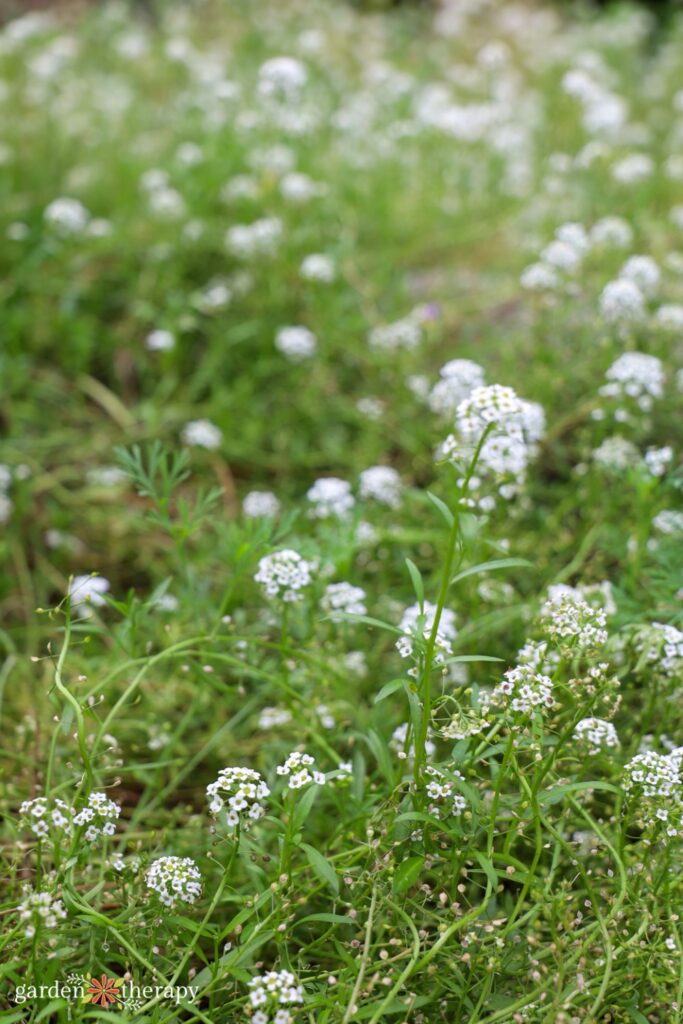

Weeds, Oh My!
When I planted my bulbs and my wildflower lawn, I went for a chaos gardening approach. While most of this worked in my favour, the one thing I would do next time is to spend more time removing the weeds.
I didn’t pull out the weeds in my first go of planting, but they started taking over this summer and crowding out the wildflowers. I spent a couple of hours pulling out all the weeds so it wasn’t a huge job, but it is easier before they spread. While not every weed is a problem and I leave many to naturalize, I would recommend removing the really stubborn, difficult ones ahead of time.


What’s Next for My Bulb Lawn?
In the next couple of years, I will continue to learn what a bulb and wildflower lawn looks like as it starts to mature. A few more bulbs, a bit of seeding, and some clean up here and there to keep it tidy. That’s all this lawn needs. No water or mowing needed and still I get the most beautiful flowers for most of year.


My key learning is that 1500 bulbs in a 600 square foot, small urban front yard still didn’t have as much wow factor as you would think.
You can never have too many bulbs. However many bulbs you think you’ve going to plant, double it, heck, triple it! You can’t get too many bulbs.
For a smaller budget, I would only go for one or two kinds of bulbs rather than ten. This way, the bulbs will all grow at the same time, and you’ll get an impressive display.
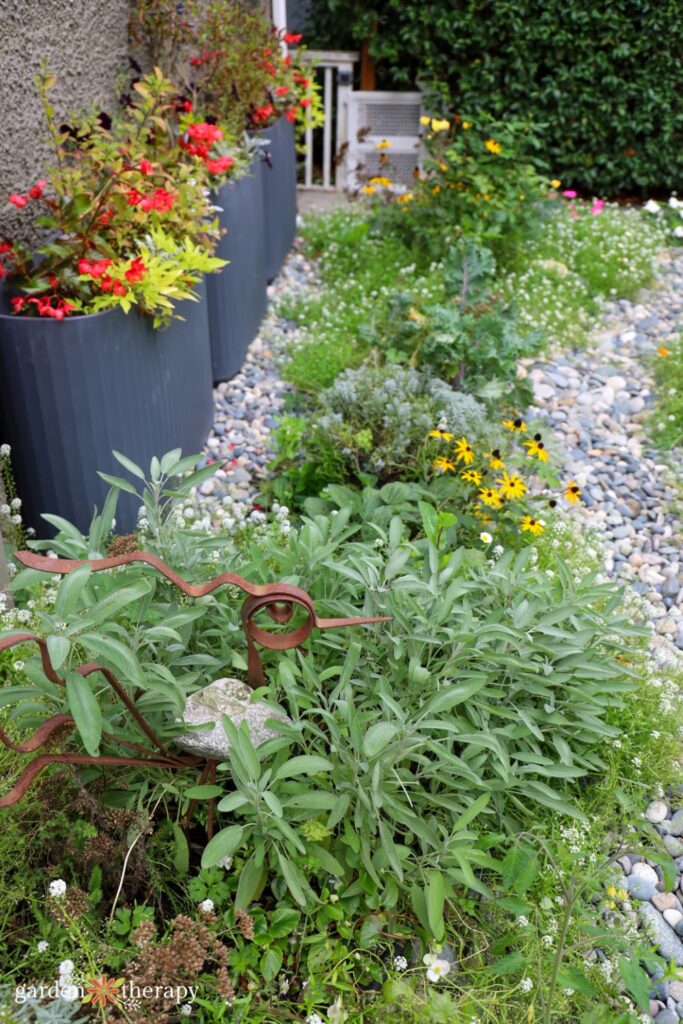

So now, my next steps are really to do nothing, just as I’ve done for the rest of the year. Which is truly the dream from a regenerative gardening, chaos gardening, and permaculture standpoint.
I’m going to let the garden naturalize, sit back in front of the fireplace, read some wonderful books, and expect to be wowed with flowers next spring!
More Resources for Growing Bulbs This Fall



